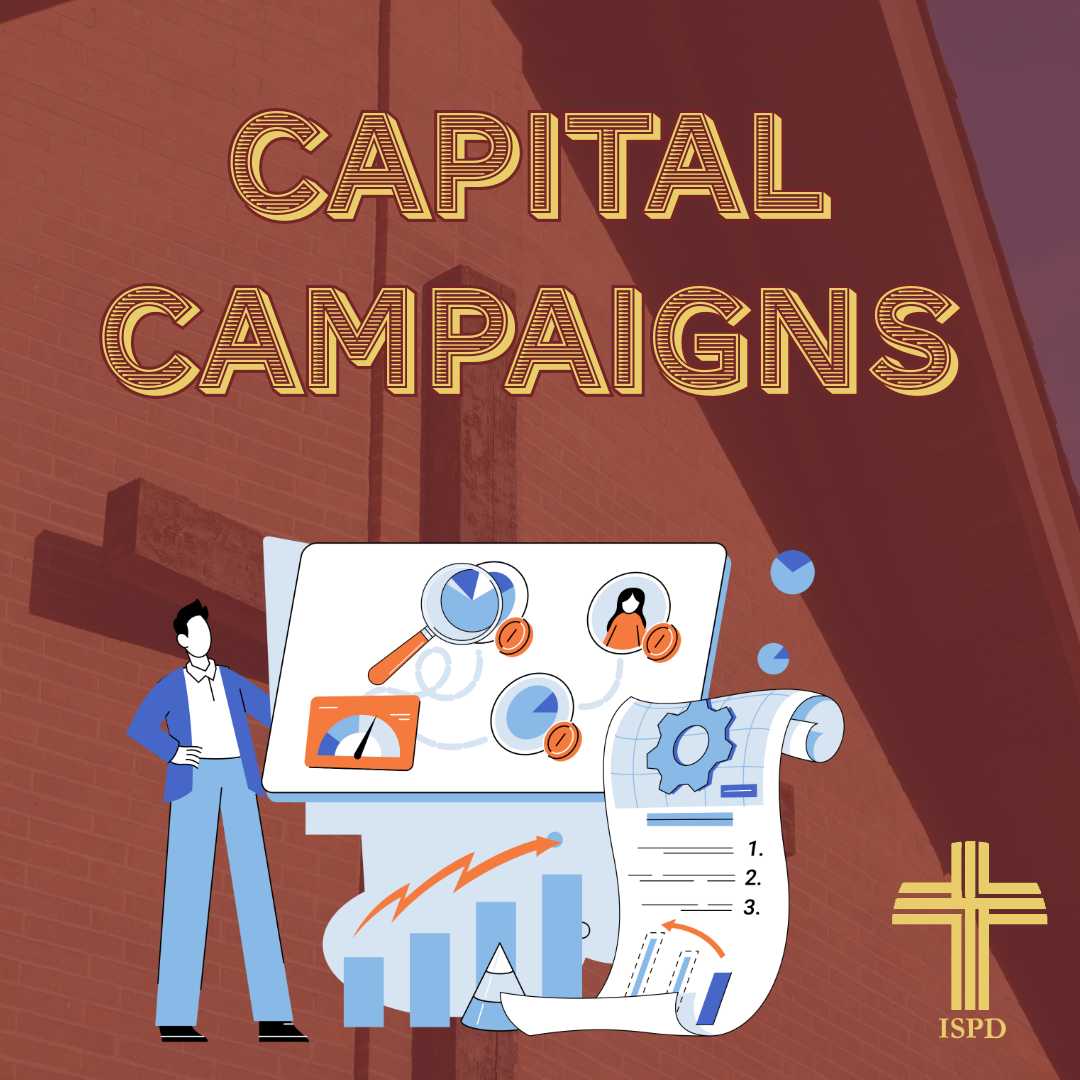
Why? What makes these campaigns successful? We often explain it like this. Let’s say you wanted to open a new business, and within five years you wanted that business to be making over $5,000,000 in net profit. Interested? Most people would be. However, before you launch that business, you know that you must have certain components in place: an excellent business plan, outstanding leadership, the proper promotional materials, dedicated personnel who believe in the mission, and perfect clarity on what you are planning to sell. The same is true for a Catholic school/parish capital campaign.
The capital campaign is like playing in the World Series or the Super Bowl or the Final Four or the Stanley Cup or the WNBA Finals. This is big time. Why? Because you are going to invite your entire community to believe in your vision and support your case. There is not a lot of room for error. Gone are the days when you could divide up everyone in your database and invite them all to give $5,000, and you would hit your goal. It just doesn’t work like that. In fact, many Catholic school and parish campaigns work by the rule of one-thirds. The first 1/3 of the money comes from 10-20 people. The second 1/3 comes from the next 100, and the third 1/3 comes from everyone else. The important point to understand here is that EVERYONE needs to play a part. Therefore, it is so important to have that campaign plan tight and clear with excellent leadership.
Because 50% of our company’s business is capital campaigns, we decided to share a lot of what we have learned. We created a visual called “Effective vs. Ineffective Capital Campaigns.” We hope you find it informative.
EFFECTIVE vs. INEFFECTIVE CAPITAL CAMPAIGNS
After 35+ years of working with Catholic parish and school capital campaigns throughout the country, ISPD recently evaluated the differences between effective campaigns and ineffective campaigns. Using a cross-section of 22 campaigns, the points listed below proved consistent. As a learning tool, this chart can be used to forewarn as well as remind. Fortunately or unfortunately, there are no shortcuts to an effective campaign. Everyone must step up, join the team, and be a leader – starting at the top and filtering throughout the entire institution. Campaigns are a yardstick to measure quality.
Effective Approach
- Active, involved pastor/president/principal
- Clear case for support
- Organizational Plan is followed
- Very best leaders are in place
- Staff supports the campaign 100%
- Catholic consultant/coach/mentor in place
- Campaign materials are effective
- Campaign grows out of strategic planning
- Effective Feasibility Study done in advance
- Campaign leaders follow the advice of consultants
- Proactive attitudes – feeling of “We can do this!”
- Excellent attendance at meetings
- All leaders are willing to roll up their sleeves and work
- Suggested timeline is followed
- Campaign leaders give gifts right away
- Organized and effective reporting system
- Communication system working across the lines
- Tight organizational structure with divisions
- Pacesetter divisions lead the campaign
- Right people are in the right divisions
- Effective Pacesetter Kick-Off Reception
- Public Kick-Off involves entire community
- Personal approach is the norm
Ineffective Approach
- Admin. with limited involvement
- Unclear case for support
- Organizational Plan changes daily
- Campaign leaders slow to give
- A lot of second-guessing
- Attitude is reactional
- Leaders afraid to invite the gift
- Campaign leaders always deferring to someone else
- Very little follow-up work is done
- Lack of confidence in leadership
- Reporting system is not effective
- Invites not being done personally
- Many “dropped balls” b/c of lack of sustained commitment
- Procrastination is rampant
- Communication system is not working
- Not THE top priority to parish/school
- Not enough leaders engaged
- Too many chiefs, not enough Indians
- People not willing to make sacrificial gifts
- Recruiting people to volunteer is difficult
- Everything is driven by $$$
- Campaign is seen as bothersome
Effective Results
- Campaign $$$ goals are met
- Campaign people goals are met
- Parish/school feel sense of accomplishment
- Stewardship of Offering/Annual Fund increases
- New leadership emerges
- Planned Giving effort flows out of campaign
- Database is greatly improved due to campaign
- Donors are looking forward to tangible results
- Groundbreaking is scheduled and used as visible proof of success
- Development Office is seen as vital to the future
- Development Director has positive position
- Admin is seen as the people who made this happen
- Legacy is established for the future
- Thoughts have already turned to future planning
- Endowment is the next step
Ineffective Results
- Campaign does not reach goals
- Feeling of failure
- A lot of finger-pointing
- Struggle to decide where to spend $$$
- Campaign leaders looking to bail out
- People are wondering what will happen
- A tentative environment is created
- Development Office dissolves
- Development Director position seen as not worth the money
- “Bunker” mentality pervades
- “I told you so” attitudes prevalent
- Struggle to turn the effort into positive
- Total Stewardship not positioned well
- Database not clean
- Recovery and healing needed
Here at ISPD, we stand ready to partner with you and your parish and/or school leaders in conducting a feasibility study and/or a capital campaign, in creating that new strategic growth plan, in enhancing your enrollment management efforts, in assessing your development/advancement processes, in creating that written strategic plan for development/advancement/stewardship, in working with you to build the people base in your school/parish, and much more. Please contact us at: catholicdev@ispdconsulting.com.















